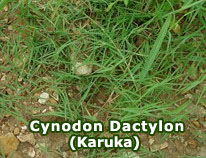Salya Tantra- Surgery in Ayurveda
March 23rd, 2007 | admin
Surgery has longer history than treatment using medicines in Ayurveda. Salya Tantra or the technique of surgery is one of the eight branches (asthanga) of Ayurveda. Ayurvedic surgeons are traditionally known as Dhanwantareeyas (after Dhanwantary).
Lord DhanwantaryÂ’s image has in his one hand a pot of Amrit (the divine nectar of immortality) and in the other a leech, suggesting surgery. Dhanwantary has once taken incarnation as a human, as the son of the king of Kashy. (Human) DhanwantaryÂ’s great grandson, Divodasa was an expert in Salya Tantra or surgery. Sushrutha, Ouradra, Pushkalavada and Oupadhenan had their education under Divodasa.
Dhanwantary and Jeevaka did surgery for brain, while Nimi specialized in ophthalmologic surgery. Bhoja was an expert to treat wounds occurred from weapons (sword, arrow, etc) and Sushruta specialized in cosmetic plastic surgery. Westerners got the idea of plastic surgery, when a local Ayurvedic surgeon re-created the nose of a British soldier named Kovaski, which he lost in a battle with Tipu Sultan of Mysore in 1792. Now Sushrutha is regarded as the father of modern plastic surgery.
There are surgical methods for treating bodily pimples, cancer, cataract, bones and diseases that affect urinary bladder, liver, intestine, etc. Surgical methods were also practiced on ear, nose and throat. Dental surgery too was not rare.
Surgery had three main phases, poorva karma (pre-surgery), Sashtrakriya (surgery) and paschath karma (post-surgical treatment). Poorva karma involves diagnosing the disease and the part of the body that affects the health of the person and pashchath karma refers to post surgical care.
Sasthrakriya is the Sanskrit word of surgery. Sasthra means a weapon and kriya means and action. Thus sasthrakriya or surgery is an action with a weapon or tool. There are about 108 different tools used in surgery, all of them have striking similarities with the surgical instruments that allopathic surgeons use.
In Kerala (and India) dealing with blood was considered an inferior thing. The surgeon also was responsible for the health of the patient. If any serious damage happens to the patient, the surgeon had full responsibility. He even got death sentence. All these have led to the extinction of surgery in India.














 Loading ...
Loading ...





